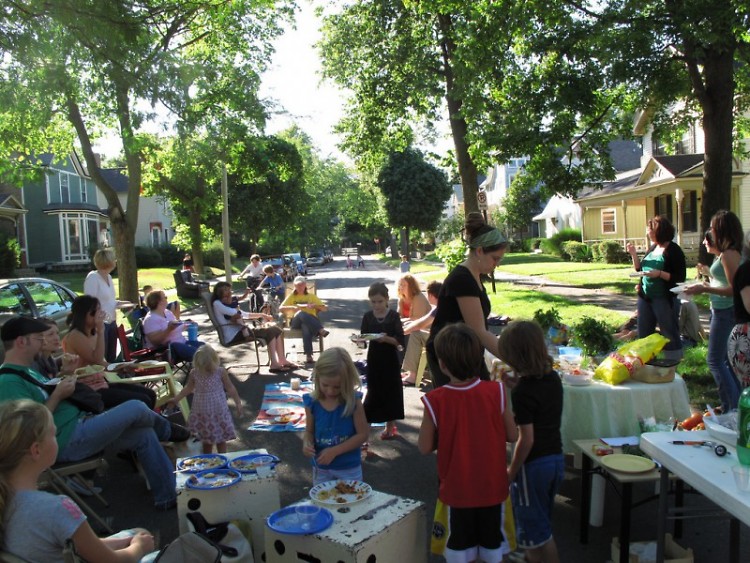From The Rapidian staff
Each week, a Rapidian staffer will publish a piece related to goings-on at The Rapidian, developments in the world of citizen journalism and tips for making the most of the site. Click here for past editorials.

Block party in The Woods of Midtown /Denise Cheng
Each week, a Rapidian staffer will publish a piece related to goings-on at The Rapidian, developments in the world of citizen journalism and tips for making the most of the site. Click here for past editorials.
The Rapidian is chock full of arts and entertainment content. Is it fluff or does it signal a new way of thinking about news, community and dialogue?
In the last six years, I've had numerous conversations with journalists, bloggers, web developers and academics about the seismic shifts in journalism and how the industry could adapt. I've attended conferences and participated in discussions to explore how to leverage crowdsourcing, why community participation is important.
It nearly always kicks off with the same conversation. I hear terms like "real news," references to profiles and features as "fluff" and expressions such as "graduating to print" (although there is a difference between being conditioned to use that terminology and being conditioned to believe that terminology). It's a triple-C locked groove: credibility, credentials and conventions. Sometimes participants are so absorbed by the primer that they never get to discussing what journalism can be in the 21st century.
While breaking news pieces were traditionally considered real news, and arts and lifestyle coverage were considered fluff, perhaps we need to rethink the latter's role, especially when it comes to hyperlocal news.
Local Life is the most populated category on The Rapidian, and arts and entertainment is the biggest section. In a city like Grand Rapids that is going through so much change at such a fast rate, features and profiles give citizens a common starting point to discuss how their communities are transforming.
On The Rapidian, we've seen conversations happen between articles and in response to articles. Early on, reporter Chris Apap questioned whether ArtPrize was a popularity contest, citing a local artist as an example of marketing tactics. Matt Silverman then interviewed that artist. More recently, Mayor George Heartwell posted a well-hyperlinked letter to Newsweek, and reporter Ruth Terry asked us to examine Newsweek's points more closely. A few of the commentors to her piece ended up connecting in person.
In addition to exploring how we categorize news stories, the plethora of arts and entertainment content is a reflection of something to toast in GR.
Last Friday night, I was at the UICA speaking with On The Town co-founder Julie Stivers. On The Town covers arts and entertainment in the area. Twenty years ago at the start of the publication, they were often told that their coverage made GR sound more exciting than it really was. It was easy to cover everything. Now, there's so much going on that you couldn't contain it all in one publication.
The abundance of arts and entertainment options in GR are manifestations of community members taking ownership, making their city a better place to live. The citizen-generated coverage that results is a beautiful partnership - one partner to increase awareness of recreation in the city and the other to give GR a meeting place to discuss what it all means.
The Rapidian, a program of the 501(c)3 nonprofit Community Media Center, relies on the community’s support to help cover the cost of training reporters and publishing content.
We need your help.
If each of our readers and content creators who values this community platform help support its creation and maintenance, The Rapidian can continue to educate and facilitate a conversation around issues for years to come.
Please support The Rapidian and make a contribution today.
Comments
Of course there are two sides to the equation--what writers write and what readers read. I note that you say "the most populated" categories. Is Local Life also the most read? I'm a believer that good readers (and The Rapidian readers are good readers!) will help to indicate what's important for the purposes of the news source. It's a two way street, but the readers and writers do function in tandem.
I'm glad that The Rapidian has remained open and flexible to both.